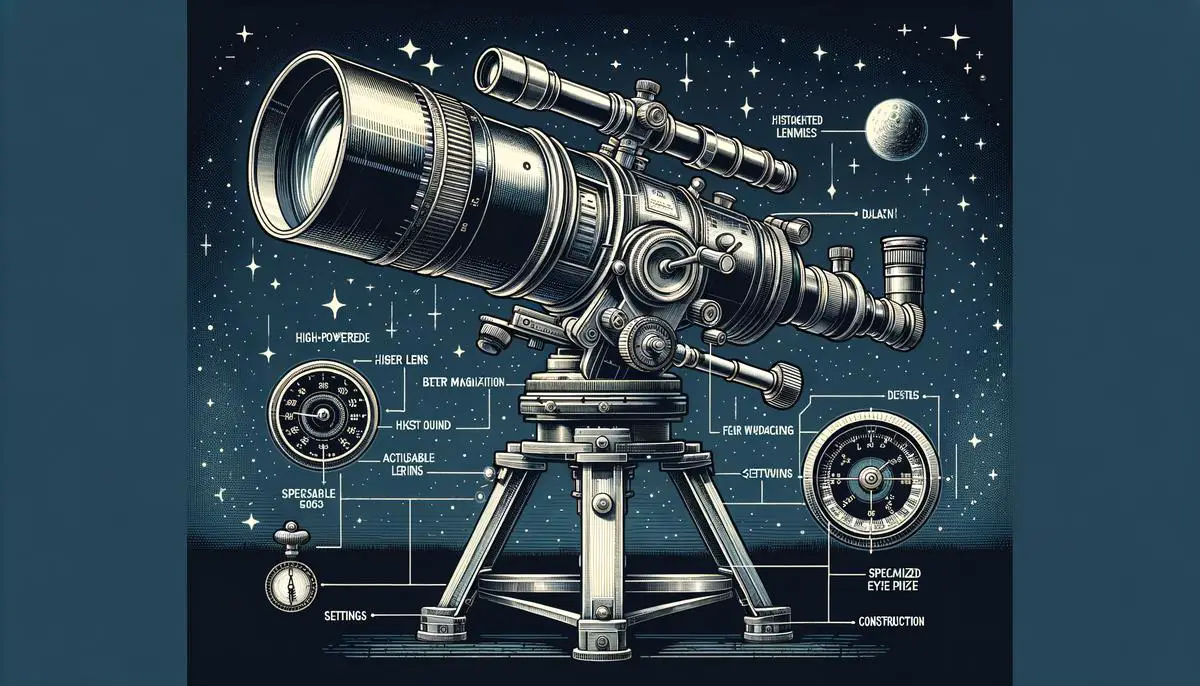For those passionate about astronomy and eager to observe the vastness of the cosmos, selecting the right telescope becomes an essential step. This guide aims to simplify the process, shedding light on what makes a telescope perfect for galaxy observation. By focusing on a few key characteristics, anyone can enhance their experience of looking out into the universe. Let’s explore these features together and prepare to marvel at the wonders of galaxies far beyond our own.
Key Features to Look for in a Galaxy-Viewing Telescope
Exploring the Night Sky: The Ideal Telescope for Galaxy Viewing
For astronomy enthusiasts eager to gaze at galaxies far, far away, choosing the right telescope is crucial. When venturing into the depth of space to observe galaxies, certain features of a telescope come into play, ensuring a captivating and illuminating experience.
At the heart of a great galaxy-viewing telescope is its aperture size — the diameter of the telescope’s primary lens or mirror. Large apertures capture more light, a fundamental requirement for observing distant and dim objects like galaxies. A telescope with an aperture of at least eight inches is a good starting point, as it gathers ample light to reveal the structure and beauty of galaxies beyond our Milky Way.
However, the aperture isn’t the only factor. The telescope’s design plays a significant role, too. Reflecting telescopes, which use mirrors, are often recommended for deep-sky viewing. Their design is less prone to chromatic aberration, a type of optical distortion, compared to refracting telescopes that operate with lenses. This makes reflectors, particularly the Dobsonian style with large mirrors and a simple mount, a favorite among galaxy chasers for their excellent light-gathering capabilities and ease of use.
Magnification capabilities are another consideration, though they might not be as critical as you think. While being able to zoom in sounds appealing, higher magnification can also mean a narrower field of view and less light reaching your eye. For galaxy observation, what you really want is a crisp, clear image rather than just a bigger one. Thus, a telescope that offers a balance between magnification and brightness is key. Usually, a lower magnification but with a high-quality image works best for galaxy viewing, allowing you to take in the grandeur of entire galaxies.
Equally important is the telescope’s mount. A sturdy, stable mount is essential for any kind of telescopic observation but becomes even more critical when focusing on distant galaxies. The slightest movement can disrupt the view. Equatorial mounts, which can be aligned with the Earth’s axis, are particularly effective for tracking the night sky’s motion. This type of mount, combined with a motor drive, can smoothly follow galaxies as they move, keeping them in your sight without constant manual adjustments.
Lastly, don’t overlook the location and conditions under which you’ll be observing. Light pollution from cities can significantly hinder your ability to see galaxies. A dark sky is a natural complement to a good telescope for galaxy viewing. Thus, the ideal telescope is not just about the equipment but also where and when you use it.
In summary, the ideal telescope for viewing galaxies combines a large aperture, a reflecting design, balanced magnification, a stable mount, and, of course, a dark sky. With the right telescope, the universe’s distant corners unravel, offering a glimpse into the sprawling, luminous islands of stars that make up our cosmos. Whether you’re a seasoned astronomer or a curious newcomer, the pursuit of galaxy observation promises a rewarding journey through the depths of space.
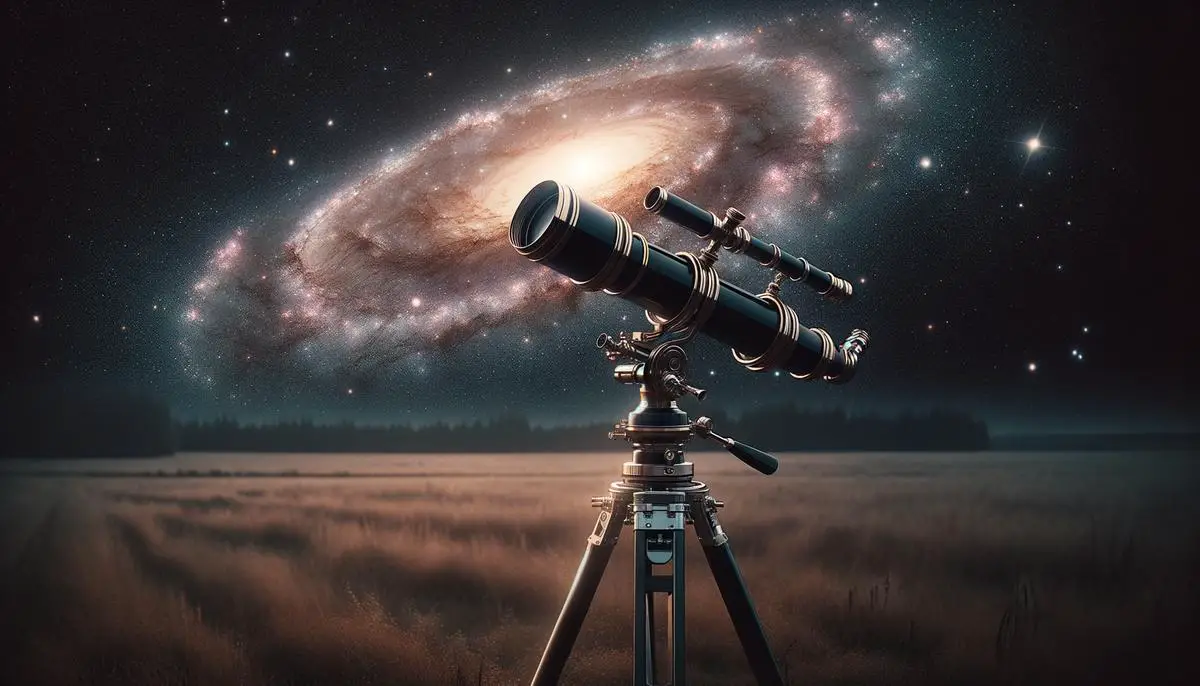
Best Telescopes for Beginners Interested in Galaxies
Selecting the right telescope can be a transformative decision for beginners passionate about peering into the vast expanses of the universe. To guide novice astronomers on this journey, two telescopes stand out for their exceptional ability to unveil the mysteries of galaxies: the Orion SkyQuest XT8 Classic Dobsonian Telescope and the Celestron NexStar 130SLT Computerized Telescope. Both models strike a remarkable balance between user-friendliness and the sophisticated features needed to explore galactic wonders.
The Orion SkyQuest XT8, with its 8-inch diameter reflector optics, offers a substantial aperture at an introductory price point, making it an excellent choice for beginners. This telescope excels in gathering light, a crucial factor when attempting to observe the dim, distant objects that galaxies often are. Its classic Dobsonian mount provides a simple yet stable platform for navigating the night sky, easing the learning curve for newcomers to astronomy.
On the other hand, the Celestron NexStar 130SLT brings technology to the forefront of stargazing with its computerized mount, offering a different approach for beginners. The 130SLT’s automated tracking system simplifies the process of locating celestial objects, making it an inviting option for those who may be daunted by manual navigation. Its 130mm aperture is adept at capturing the faint light of galaxies, and when coupled with its GoTo capabilities, this telescope allows users to explore a database of celestial objects effortlessly.
Both telescopes mitigate common beginner frustrations such as complex setup procedures and difficult object tracking. The Orion SkyQuest XT8 prioritizes simplicity and performance, offering a hands-on approach to learning the skies. Meanwhile, the Celestron NexStar 130SLT leverages technology to guide users directly to the galaxies, planets, and nebulae they desire to see, making it particularly appealing for enthusiasts keen on a more automated experience.
In choosing between these models, beginners should consider their personal preferences in terms of manual versus computerized navigation. Their choice will influence not just their initial experiences with astronomy, but their trajectory in the hobby as well. The Orion SkyQuest XT8 and Celestron NexStar 130SLT stand as gateways to the cosmos, each offering a unique path for beginners to embark upon their celestial voyages.
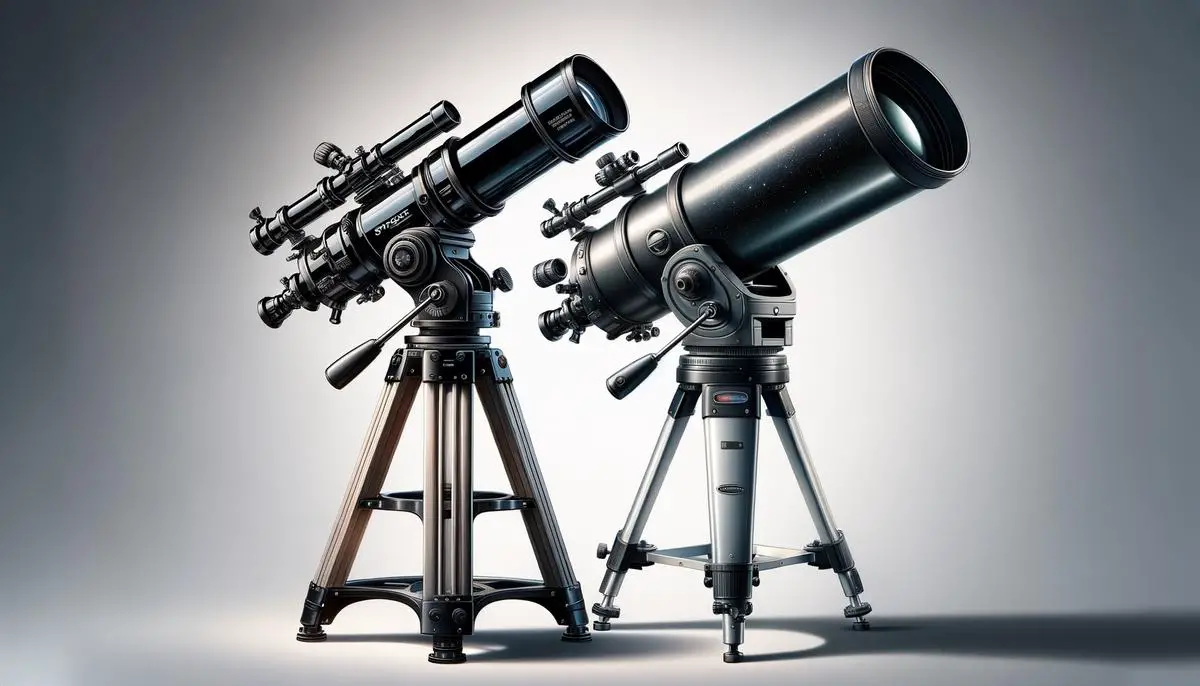
Advanced Telescopes for Deep-Sky Observing
Moving beyond the basic setup and theoretical considerations for deep-sky viewing, let’s dive into how advanced telescopes peel back the curtain on the universe’s most enigmatic wonders. Exploring the cosmos requires not just any telescope, but instruments capable of unraveling the mysteries that lie far beyond our naked eye’s reach. These aren’t your average backyard scopes but marvels of modern astronomy that push the limits of technology and human ingenuity.
One such game changer in the field is the Hubble Space Telescope. Launched into orbit in 1990, the Hubble has transformed our understanding of the universe. By operating above the Earth’s distorting atmosphere, it captures stunningly clear images of distant galaxies, nebulae, and other celestial phenomena with unparalleled detail. Its wide range of instruments and lenses, working across different light wavelengths—from ultraviolet to near-infrared—allows astronomers to gather data that ground-based telescopes could only dream of. This orbiting observatory has played a key role in discoveries like the rate of expansion of the universe and the presence of black holes at the centers of galaxies, showcasing the power of space-based astronomy.
On the ground, the Very Large Telescope (VLT) in Chile’s Atacama Desert offers another peek into the deep sky’s secrets. This telescope isn’t a single instrument but an array of four individual telescopes, each with an 8.2-meter mirror. Together, they can achieve the resolution of a 16-meter telescope. The VLT takes advantage of adaptive optics technology, which corrects for the blurring effect of the Earth’s atmosphere in real-time, producing sharper images. Its contributions to astronomy include detailed studies of exoplanets and observations that have challenged our understanding of universal constants.
Looking toward the future, the James Webb Space Telescope (JWST) stands as the next leap forward. Set to complement and eventually succeed the Hubble, the JWST sports a 6.5-meter primary mirror and special instruments capable of observing the universe in the infrared spectrum. This capability is crucial for looking back in time to see the first galaxies that formed after the Big Bang and investigating potentially habitable exoplanets around other stars. Its launch represents the culmination of international collaboration and technological innovation, promising to unlock further cosmic secrets.
Lastly, the Giant Magellan Telescope (GMT), currently under construction in Chile, exemplifies the next generation of ground-based observatories. With seven mirrors, each 8.4 meters in diameter, the GMT will have a resolving power ten times greater than the Hubble’s when it becomes operational. This monstrous telescope will explore mysteries like dark energy, the formation of cosmic structures, and the detailed composition of exoplanet atmospheres.
While each of these advanced telescopes serves a unique purpose, together they represent humanity’s quest to understand the universe. By peering deeper into space than ever before, these observatories not only reveal the beauty and complexity of the cosmos but also remind us of our place within it. As technology advances, so too will our ability to unlock the secrets of the deep sky, continuing the timeless pursuit of knowledge that astronomy embodies.
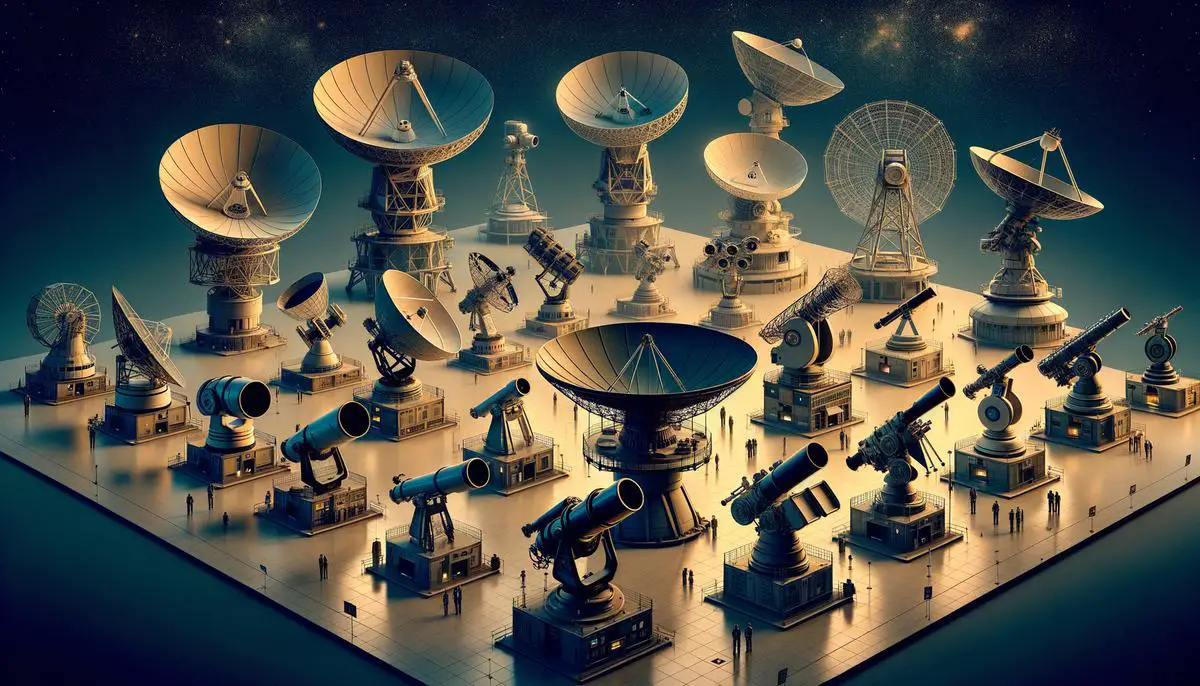
Maintaining and Upgrading Your Telescope for Galaxy Viewing
Maintaining and Upgrading Your Telescope for Optimal Galaxy Viewing
Maintaining and upgrading a telescope is crucial for anyone aiming to explore the cosmos, particularly galaxies, with clarity and precision. This guide delves into practical steps and tips to ensure your telescope remains in top condition for galaxy viewing, enhancing your stargazing experience.
Care and Maintenance Tips
- Cleaning Optics: The optics, including lenses and mirrors, are the heart of your telescope. Dust and smudges can significantly degrade image quality. Use a soft, camel-hair brush or air blower for dust removal. For smudges, apply a proper lens-cleaning solution sparingly to a microfiber cloth, never directly on the glass.
- Regular Adjustments: Telescopes, especially reflector models, require periodic collimation to align the mirrors properly. This ensures the clearest, most aligned view of galaxies. Following your telescope’s instructions, check and adjust collimation before observing sessions, particularly if the telescope has been moved.
- Protective Storage: Proper storage is essential to maintaining your telescope’s condition. Keep it covered when not in use to protect it from dust and store it in a cool, dry place. If possible, keep it assembled on its mount in a secure location to minimize handling and potential misalignment.
Upgrades for Enhanced Viewing
- Better Eyepieces: The eyepiece is crucial for determining magnification and field of view. Upgrading to higher-quality eyepieces can significantly improve your viewing experience. Consider a set with various focal lengths for flexibility in observing different celestial objects.
- Upgraded Mount: A robust, stable mount is vital for tracking objects smoothly and accurately in the night sky. If you started with a basic mount, consider upgrading to a computerized tracking mount. This will allow you to locate and follow galaxies with greater ease, making long observation sessions less tedious.
- Filters for Light Pollution: For those observing from urban areas, light pollution can hinder the visibility of galaxies. A light pollution filter can improve contrast by blocking unwanted artificial light, allowing fainter details of galaxies to emerge.
- Adding a Barlow Lens: A Barlow lens can double or triple the effective magnification of your eyepieces. This accessory is particularly useful for detailed observation of smaller or distant galaxies, extending the capabilities of your existing eyepiece collection.
- Camera Adapters: For enthusiasts interested in astrophotography, adding a camera adapter can transform your telescope into a tool for capturing stunning images of galaxies. With practice, this can not only enhance your appreciation of the universe but also contribute valuable observations to the astronomy community.
Emphasizing Care with Usage
- Gentle Handling: Always handle your telescope and its components gently, especially during setup and takedown. Rough adjustments or forcing components can lead to damage or misalignment, degrading performance over time.
- Cable Management: For computerized telescopes, proper cable management is crucial to avoid tangles and potential damage. Secure cables with straps or clips to keep them organized and out of the way during observation and movement.
- Software Updates: For telescopes with computerized systems, staying up-to-date with firmware and software updates is essential. These updates can enhance functionality, introduce new features, and improve the accuracy of celestial tracking.
Upgrading and maintaining your telescope is an ongoing process that enhances your ability to explore the galaxy. By investing time and resources into your equipment, you deepen your connection to the universe and enrich your stargazing journey. Whether you’re capturing detailed images of galaxy clusters or simply marveling at the beauty of our cosmos, a well-maintained and thoughtfully upgraded telescope is an indispensable companion on your astronomical adventures.
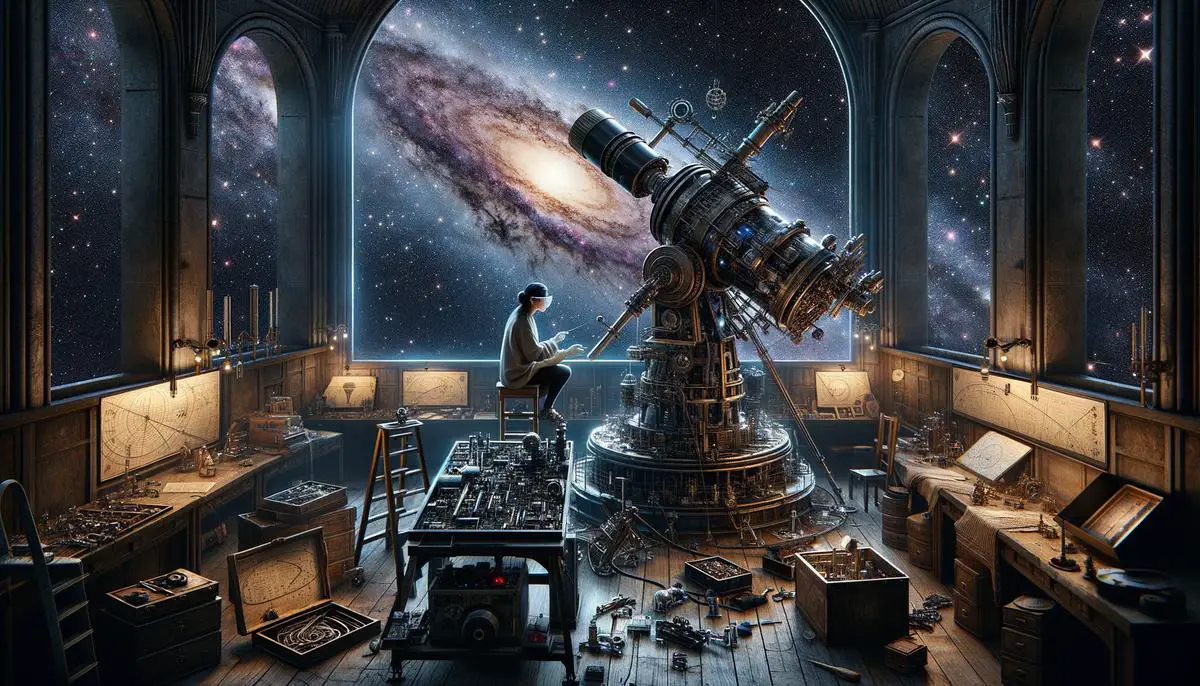
Embracing the universe through the lens of a telescope not only broadens our understanding of space but also enriches our appreciation for the boundless mysteries it holds. By carefully choosing a telescope, maintaining it, and considering thoughtful upgrades, we unlock the door to incredible celestial sights. The night sky, with its myriad galaxies, becomes a canvas of light and color, inviting us to witness the marvels of creation. Let this guide be your companion as you embark on the awe-inspiring adventure of galaxy viewing, ready to capture the majesty of the cosmos.
![]()
